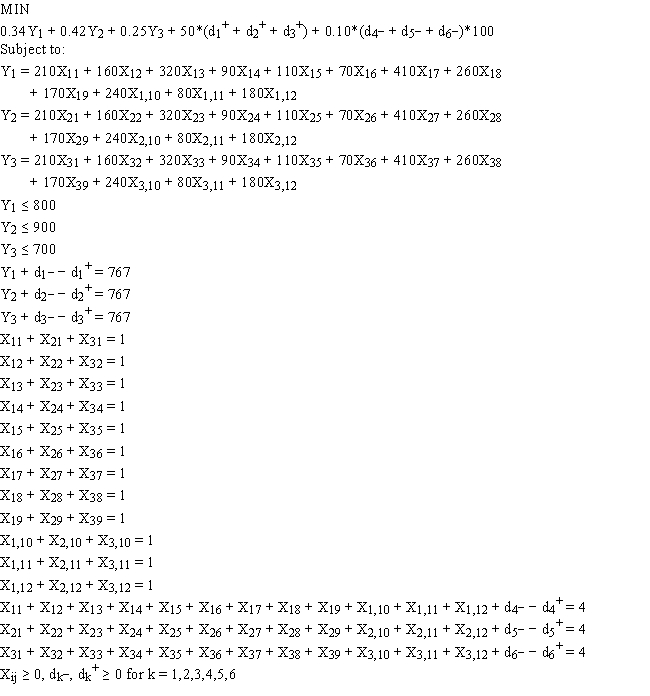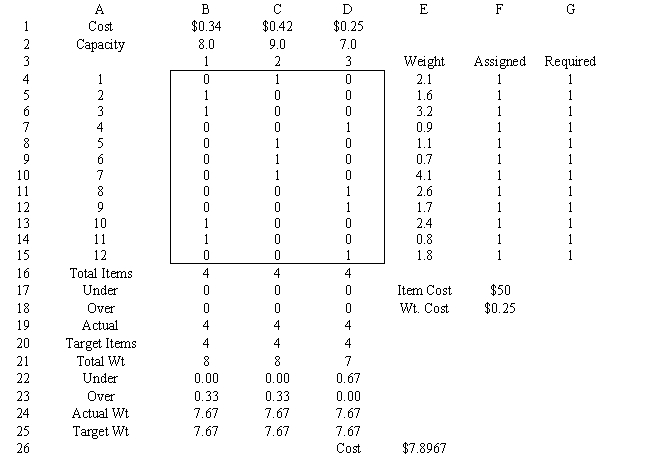Essay
Exhibit 7.4
The following questions are based on the problem below.
Robert Gardner runs a small, local-only delivery service. His fleet consists of three smaller panel trucks. He recently accepted a contract to deliver 12 shipping boxes of goods for delivery to 12 different customers. The box weights are: 210, 160, 320, 90, 110, 70, 410, 260, 170, 240, 80 and 180 for boxes 1 through 12, respectively. Since each truck differs each truck has different load capacities as given below:  Robert would like each truck equally loaded, both in terms of number of boxes and in terms of total weight, while minimizing his shipping costs. Assume a cost of $50 per item for trucks carrying extra boxes and $0.10 per pound cost for trucks carrying less weight.
Robert would like each truck equally loaded, both in terms of number of boxes and in terms of total weight, while minimizing his shipping costs. Assume a cost of $50 per item for trucks carrying extra boxes and $0.10 per pound cost for trucks carrying less weight.
The following integer goal programming formulation applies to his problem.
Y1 = weight loaded in truck 1; Y2 = weight loaded in truck 2; Y3 = weight loaded in truck 3;
Xi,j = 0 if truck i not loaded with box j; 1 if truck i loaded with box j.  Given the following spreadsheet solution of this integer goal programming formulation, answer the following questions.
Given the following spreadsheet solution of this integer goal programming formulation, answer the following questions. 
-Refer to Exhibit 7.4. What formulas should go in cell E26 of the spreadsheet?
Correct Answer:

Verified
Correct Answer:
Verified
Q1: The primary benefit of a MINIMAX objective
Q3: Exhibit 7.1<br>The following questions are based on
Q4: A dietitian wants to formulate a low
Q5: A company wants to purchase large and
Q6: An investor wants to invest $50,000 in
Q7: Exhibit 7.1<br>The following questions are based on
Q8: Exhibit 7.1<br>The following questions are based on
Q9: Exhibit 7.2<br>The following questions are based on
Q10: Deviational variables<br>A) are added to constraints to
Q11: Goal programming solution feedback indicates that the